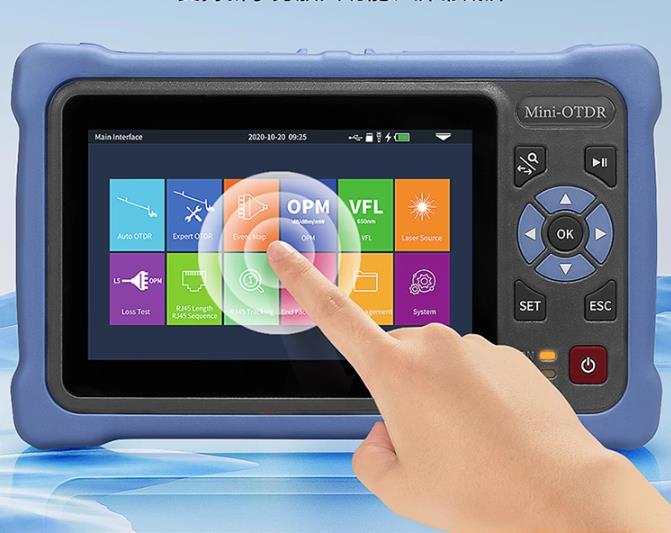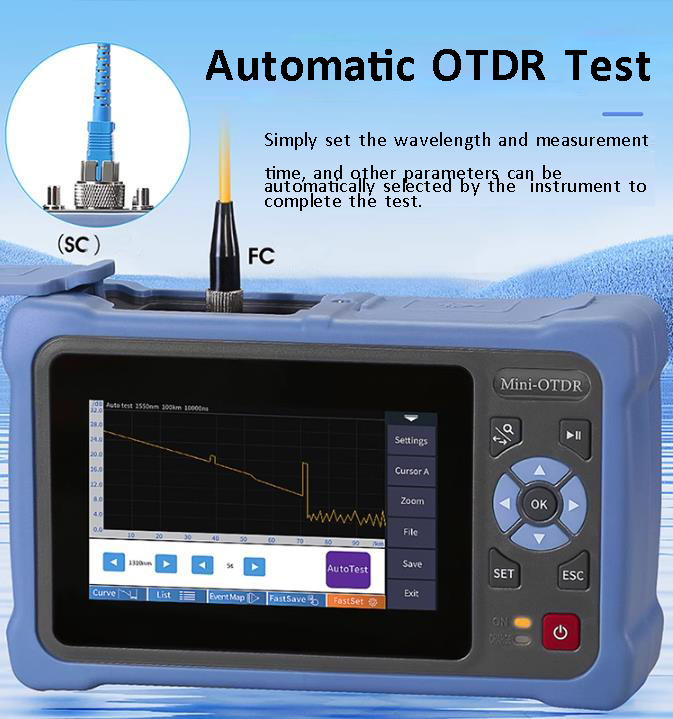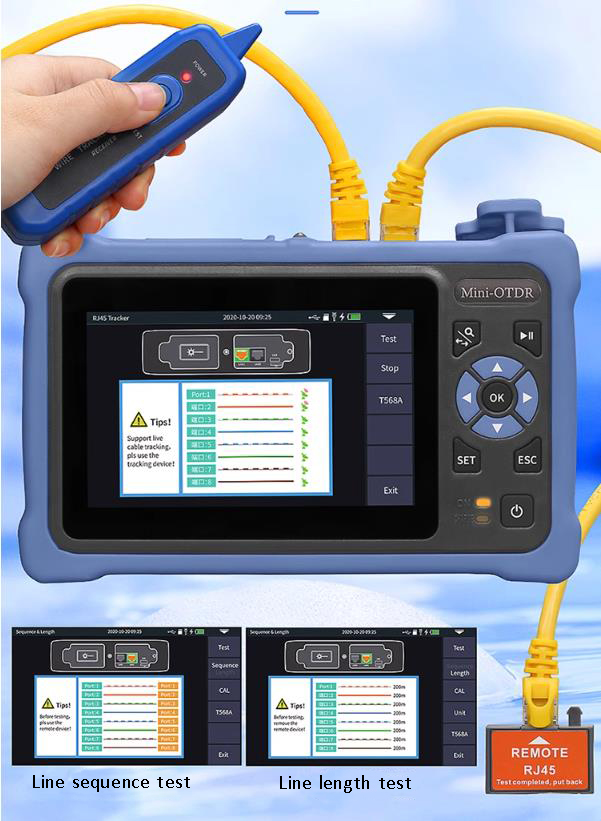OTDR is a precision optoelectronic integrated instrument made by using Rayleigh scattering and backscattering produced by Fresnel reflection when light is transmitted in optical fibers, which is widely used in the maintenance and construction of fiber optic cable lines for the measurement of optical fiber length, transmission attenuation of optical fibers, connector attenuation, and fault location, etc. The OTDR test is performed by transmitting light pulses into the optical fiber and receiving the return at the OTDR port.

OTDR testing is performed by transmitting light pulses into the fiber and receiving the return information at the OTDR port. As the light pulse is transmitted within the fiber, it is scattered and reflected due to the nature of the fiber itself, connectors, splices, bends, or other similar events. Some of this scattering and reflection is then returned to the OTDR. The useful information returned is measured by the OTDR’s detector, and they serve as slices of time or curves at different locations within the fiber.
The distance can be calculated by determining the time taken from the emitted signal to the returned signal, and then determining the speed of the light through the glassy substance. The following formula illustrates how an OTDR measures distance. d = (c x t)/2 (IOR) In this formula, c is the speed of light in a vacuum, and t is the total time from when the signal is emitted to when it is received (two-way) (multiplying the two values by two and dividing by two is the one-way distance). Because light travels slower in glass than in a vacuum, in order to accurately measure the distance, the fiber being measured must specify the index of refraction (IOR).The IOR is indicated by the fiber manufacturer.

Due to the short fiber optic links (typically less than 1km), OTDRs measure a certain amount of volatility into the curve, and these small fluctuations affect the final numerical calculations. In describing the technical parameters of OTDR, there is an index about linearity, and this index is 0.05dB/km for general OTDR (E6000C: 0.05dB/km; N3900A: 0.03dB/km), which in fact describes the fluctuating range of the OTDR curve. So for short fibers, the accuracy of OTDR measurement is going to be challenged. What methods can be used to obtain a better test result? Inductotherm proposes the following three solutions.
1. Add 2km test dummy fiber.
As the fiber length is grown by adding the 2km test dummy fiber, this effect is reduced. A more satisfactory result should be obtained. However, due to the increased length, but also the introduction of test errors, this method still has a certain test method to bring errors. But as a test data to verify the quality of the project is quite valuable.
2. Measure the link loss with light source and optical power meter, and measure the length with OTDR.
As the use of light sources, optical power meters to measure link loss is close to the standard loss measurement method, so the accuracy of loss measurement is improved. Of course for short fibers an optical power meter with a higher resolution accuracy class is used as much as possible to reduce the error. The length measurement is obtained by OTDR. The attenuation value per unit length can be obtained by dividing the loss value by the length value.
3, OTDR measurement curve is only for reference, OTDR measurement focuses on eliminating link obstacles.
Short fiber measurement, OTDR measurement curve is best used only as a reference, as a qualitative basis, not as a quantitative basis. OTDR is more tasked to deal with the obstacles in the link, such as how the connector connection quality, fusion splicing point fusion quality, probe fiber micro-bend and other content.


